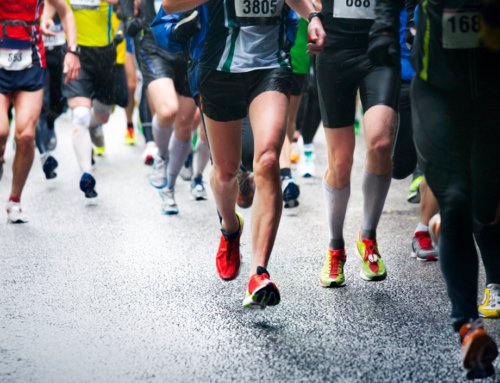The Anterior Cruciate Ligament (ACL) is one of the main ligaments located in the knee. It is essential for maintaining joint stability. Injuring this ligament can be debilitating and often requires significant recovery time.
This video and blog will help you to understand a bit more about the signs to look for and how to diagnose an ACL rupture.
Common Mechanisms and Causes of ACL Tears
The mechanism of injury is often the most important indication that you might have torn your ACL. In general ACL injuries occur at relatively low velocity, often with a deceleration and twisting action.
- Sudden Stops or Changes in Direction: This is the most common way that you can damage your ACL. When an athlete plants their foot and quickly pivots in another direction, the ACL can tear. This is very common in sports involving rapid changes in direction, such as football, hockey, rugby etc.
- Jumping and Landing: Landing awkwardly after a jump, particularly when the knee is extended, can often cause the ACL to tear. This is common in sports like volleyball, basketball and gymnastics.
- Direct Impact: While most ACL injuries are caused by non contact injuries, a direct blow to the knee, often seen in contact sports like rugby or football, can result in an ACL tear. This typically happens when an opponent’s body collides with the knee from the front or side, snapping the ACL..
- Overextension: Hyperextension of the knee, where the leg bends too far backward, can also lead to an ACL injury. This mechanism of injury occurs in higher speed activities like skiing.
Recognising the Symptoms of an ACL Tear
- Audible Pop: Many people report hearing a loud “pop” sound at the moment of injury. While this is a good indication that the ACL has been torn, if there is no audible “pop” it doesn’t mean that the ACL is not ruptured.
- Immediate Pain: In some cases people describe a sharp and severe pain in the knee which occurs immediately following the injury. However it is not always present, and if you don’t have significant pain it does not rule out an ACL rupture.
- Instability: People usually find it difficult to get up after an ACL injury, and have a feeling that the knee is going to “give way” when trying to stand or walk. The knee may feel unstable and that you can’t put your weight on it properly.
- Swelling: Rapid swelling within an hour or so of the injury is very typical of an ACL tear. The knee may also appear puffy and feel warm to touch due to some bleeding from the torn ligament.
- Limited Range of Motion: After an ACL tear people find it difficult to fully extend or fully bend the knee. The joint may also feel stiff and painful to move.
What It Feels Like When You’ve Injured Your ACL
Experiencing an ACL tear can be quite traumatic. The initial moment of injury can be marked by a sudden, intense pain (although as explained, not always).
You will almost certainly be down on the ground and not able to get up initially. Once you are on your feet you will likely be unable to put much weight on the knee, and have a sensation of the knee giving way.
Common descriptions include things like “not trusting the knee” or that it just “doesn’t feel right to walk”.
Immediate Actions After Suspecting an ACL Injury
- Stop Activity Immediately: It’s important that if you think you have ruptured your ACL that you stop your activity. It’s also best to avoid putting your full weight on the injured leg.
- Apply the POLICE Method:
- Protect: You will likely need to protect the knee for further injury and rest it and keep your weight off it as much as you can for a period of time. This will usually be for 24-48 hours.
- Optimal Load: Depending on the severity of the injury you will then gradually introduce gentle movement and load as tolerated.
- Ice: Apply an ice pack to the knee for 15-20 minutes every couple of hours to help reduce swelling and pain.
- Compression: You can use a bandage to wrap the knee, providing support and minimising swelling.
- Elevation: Try and keep the knee elevated (ideally above heart level) to reduce swelling.
- Seek Medical Attention: If you suspect you have had an ACL injury you need to seek professional help from a Physiotherapist or Sports Medicine expert as soon as possible.
At Complete we have an exceptional sports medicine service with consultant sports specialists who are very experienced in assessing and managing ACL injuries.
At Complete we can refer you for am MRI without the need for a GP referral. Please speak to your physiotherapist or our admin team for more information.
- Use Crutches if Necessary: You may find that using crutches will take some pressure off the knee and allow you to mobilise more easily.
- Avoid Heat and Massage: In the initial 48 hours, avoid heat packs or massage as they can increase swelling and bleeding.
Conclusion
An ACL tear is a serious injury that requires timely and professional attention and appropriate management. If you suspect an ACL injury, initially you need to follow the POLICE method, and then get professional medical advice to ensure the best possible outcome.
At Complete Physio al our Physiotherapists have vast experience in lower limb injuries like ACL ruptures. If you suspect an injury then get in touch with us ASAP.
Don’t let pain hold you back, book now!








